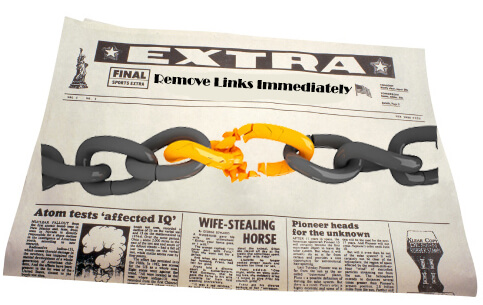How to Safely Remove Bad Links without Hurting your Search Engine Ranking
In its quest to rid the digital world of spam Google has taken aim at link building, one of the cornerstones of most SEO strategies, and turned the online marketing community upside down. In fact, link building is not dead – it has simply evolved into a more meaningful measure of a website’s authority and relevance.
The problem facing webmasters is that many of the older links pointing to their site are now in violation of Google’s revised terms of service. What was perfectly acceptable two years ago will get your website penalized or even banned from Google’s search results today.
How to Identify a Bad Link
A good backlink to your website will help you receive some of the authority and relevance of the site that you are linking from. Because links are so important to improving search result rankings, Google has updated their definition of what constitutes a bad link.
- While paid links are still a great way to expand the reach of your website, you should use them sparingly, and make sure they are labeled with a no-follow tag which basically tells Google not to consider the link. This means that no ranking juice will pass through your no-follow links. Do-follow paid links are considered bad in the eyes of the search engines because they pass ranking power, which Google considers an attempt to unfairly ‘game’ the system, and they will earn your site a harsh penalty.
- Irrelevant links that are totally unrelated to your website’s field or niche should be avoided. They offer no value for the website visitor, and send a signal to Google that you’re employing spammy link building practices.
- Public and private link networks are simply any portfolio of websites and blogs that are used to manipulate the search results by linking out to other websites. Google is aggressively targeting link networks wherever they are found, and the potential penalties if you get caught could range from loss of rankings to complete de-indexing of your website.
- Broken links can happen over time, so it’s a good idea to monitor both your external and internal links. A few broken links are one thing, but too many can cost you search engine ranking.
- Keyword-rich anchor texts, whether used in your guest blog post content or in conjunction with blog and forum commenting, are another sure-fire way to get your website penalized. You need to vary your anchor text as much as possible, and don’t forget to add variations of branded anchor text as well as innocent-looking anchor text such as ‘click here.’
Removing Bad Links
If you’ve identified a number of bad links on your website but have not yet received a notice from Google, start cleaning up your link profile now before you get penalized.
- Paid links should be removed slowly over time. If you remove all of your paid links at once, you’ll probably experience a significant drop in rankings. Replace each paid link you remove with a non-paid link with the same topic, degree of quality (PageRank, MozRank or ACRank) and anchor text.
- Remember that the age of the links on your website could be a ranking consideration. It might take a while for a brand new link to achieve the same results that you obtained with a two-year-old link.










